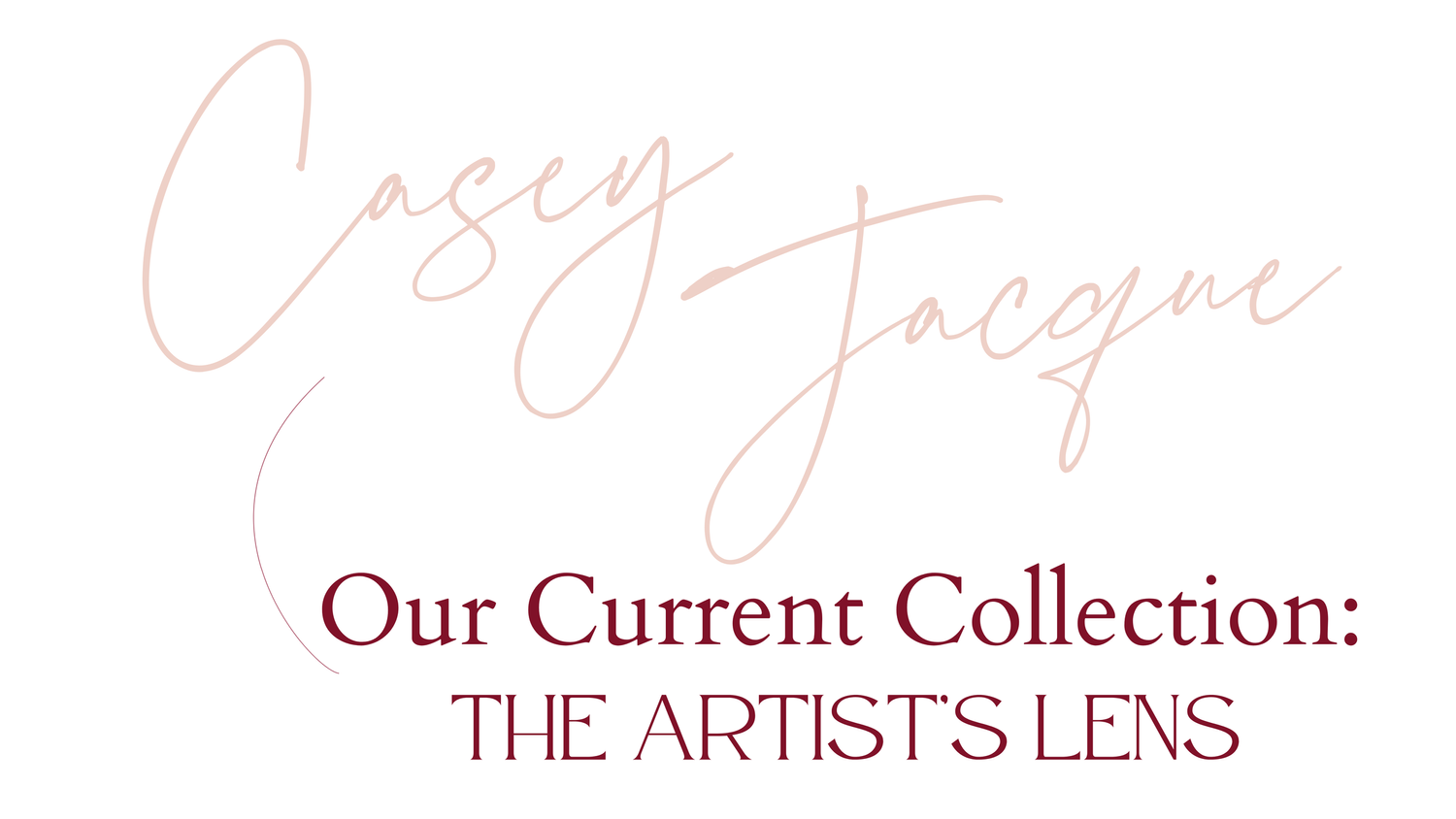How to Demystify Authenticity and Unwrap Your Self-Expression
Article Published for The Creative Woman Diaries Collection, Written by Charlotte Jade Askew
Photo by Luca de Massis
Authentic has become a burned-out buzzword. A kind of catch-all term for the “right” (note the air quotes) expression of ourselves — a denotation of a conscious person. Our understanding has spoiled in the heat of those seeking to make it a destination. Some place one might only reach by means of mystical experience or a plant medicine journey. Authenticity, in this way, becomes a kind of hierarchy, a stage upon which we judge others' growth and effort and deem them worthy (or not) of the term.
Photo by Susan Wilkinson
The act of being oneself.
Authenticity, if we strip back the need to make it some hard-to-reach, elevated prize, is ultimately the act of being oneself. The expression of one’s soul in physical form.
The path of authenticity is one anyone can go on, at any given moment — without plant medicine, mystical experience, or pre-prescribed guidance. We have increasingly complicated the concept of self-growth so that in many ways now it seems as though you must spend thousands of dollars on a guided experience and become fluent in four different breath techniques to be able to claim it. And I’m not negating the value of those things, nor the immense benefit of guidance from those who have gone before on a path of self-discovery, but I don’t believe we ought to pretend that it isn’t possible to access authenticity through our own organic experiences.
We are each, after all, ourselves.
Photo by Jon Ly
A lifelong process of knowing and unknowing.
Embodying our authentic selves is more a matter of unlearning what the world has imposed on us than it is learning who we are.
Knowing and expressing your most genuine self should not be over-complicated or made to seem like a journey one must embark on for years. We are all in a lifelong process of knowing and unknowing ourselves, and rather than a journey (which implies a destination or endpoint), this is a moment-by-moment experience. A constant, playful investigation of our desires, beliefs, and expressions.
Authenticity is trueness of self. The greatest expression of our soul on Earth, and the truth is, we were all born with the tools to engage in that expression at any time. To consider that we are created without the knowledge of how to be ourselves — how to express the soul in physical form seems nonsense to me. Why be here without the capacity to be ourselves? Why have a self, if not to express it?
Photo by Nataliya Melnychuk
The unwrapping, reconnection, and rediscovery.
Where we become unstuck is in the living after birth. The confusions of a hedonistic society seduced by instant gratification. We do not lose our capacity for authenticity; we merely lose the courage to express the soul in a society that prefers similarity over the strange. People who have learned to flock and fawn in order to be loved.
Learned. We learn how not to express ourselves. How to be palatable and digestible to others. We pack our true selves into bento boxes that we tie with an iron bow — all so that we might keep the fear of not being loved at bay.
Authenticity then, is an unwrapping, a kind of return to self in the face of a society in which it’s much safer to fit in.
The return to knowing oneself and being oneself is in and through self-expression, which, paradoxically, is also the knowing of self. To express oneself one must know oneself, and to know oneself one must express oneself.
Photo by Max Ducourneau
Living in the genuine physicality of our soul.
As children, we express every facet of ourselves with a freedom that is often affectionately referred to as naïve. Children have not yet developed the cognitive capacity to wonder how others might perceive them, thus their expression is uncensored and unbridled, utilising every feature of the living human experience. Somatically, verbally, emotionally, physiologically, energetically. The holistic expression of self: mind, body & soul.
As we grow older and begin to perceive expectations and experience pain in the multifaceted ways it shows up, we gradually start closing off and shutting down our authentic expression, changing and altering who we are to fit a mould that we believe will make us easier to digest and protect us from pain. We disconnect from our emotional expression, our somatic experiences of energy, and forget what it is to live in the genuine physicality of our soul. We unplug from our awareness of self in an effort to disconnect from challenging emotional experiences and begin to communicate only what might be palatable to the people whose opinions we ultimately invent through our interpretations.
A reparation.
What we need is a process of reconnection. A rediscovery of the tools we already innately possess. To come back to self in service of our divine purpose here on Earth: expressing one’s soul in its truest essence in this physical form.
This is transformative healing. A reparation. Cleansing and bleeding the wounds accrued over a lifetime so that the skin might finally knit together without festering.
Photo by George Milton
We cannot shift what we do not know is there.
Step One: Cultivate Self-Awareness
Awareness of our patterns is the first step in any kind of healing. We cannot heal what we do not know is there. Understanding your thoughts as separate from your soul, as automatic habits that are not necessarily true nor helpful in every instance. This is a process of re-orienting your power for choice. You can choose which thoughts are true for you, and which ones you’d like to believe, and let the rest float on — and float through — in the same way they floated in.
Practical Tips: Journaling and Meditation
Journaling is an exercise of pouring out what is inside. Relax, release self-censorship, and allow your thoughts to come through. As you reflect on what you wrote, ask: How much of it is me speaking? And how much of it is what I think I should say?
Meditation is, among many things, a practice of thought control. What better way to observe your thoughts than to step back from the material world, curate your sensory experiences, and tune inward? You’ll notice thoughts come as soon as you try to quiet your brain. Just notice them. Don’t force them to mean anything or let your brain tell you a story; allow them to be there while gently drawing your attention back to the vast emptiness behind your closed eyes.
I’m also a big advocate for talking to yourself as you would speak to someone you truly care about. I will pause myself mid-thought when I catch something ‘inauthentic’ floating into my mind, such as thoughts encouraging old habits of masking or avoidance. I’ll say out loud, “Hey, I see you and I hear you, but no. Nope. We’re actually not going there. We don’t do that anymore.”
Photo by Liana Mikah
Working with the origin of emotional experiences & self-protection.
Step Two: Identify and Release Emotional Blocks
What you believe to be true about yourself is going to get in the way of your true expression of yourself. This is because what you believe likely comes from how you were raised and what you experienced growing up. Knowing your subconscious and conscious beliefs, understanding your tender points and what triggers you, identifying the ways in which you sabotage yourself (often as an attempt to protect yourself), as well as understanding how you view yourself is vital to the process of unlearning.
Practical Tips: Energetic Clearing
Once you’re clear on these things, EFT (Emotional Freedom Technique) or “tapping”, is an empirically researched, evidence-based energy psychology technique for releasing emotional blocks. There are tonnes of ‘how-to’ videos on YouTube, but for the best results, I encourage you to seek out a trained practitioner and go through the process with them.
Photo by Jasmin Chew
Notice where you sugar-coat and contort.
Step Three: Practice Authentic Communication
Start paying attention to when you sugar-coat or strip back the things you want to say in an attempt to control how you are perceived by others. Notice when you change what you want to say to fit with the collective or avoid commenting when you’d rather have spoken up. Again, this is a process of awareness that must begin before we can align the way we communicate and what we communicate with our authentic selves.
Practical Tips: Journal or Voice Note
At the end of each day, write down (in a journal or voice note) any instances when you changed what you wanted to say or didn’t stand in your truth throughout the day. Explore each of those instances in relation to what you were trying to do by changing your authentic expression. Ask yourself: What was I trying to avoid? What did I want the other person to think about me? Whose emotions was I trying to take care of? Is there a way I could have openly communicated while maintaining respect for myself and the other person?
Photo by Karly Jones
A natural, fluid design.
Step Four: Creative Self-Expression
Expression is not a singularity. We have been given so many incredible tools to experience ourselves in this physical form. Play with various designs. Reconnect with yourself through art, writing, or dancing. We’ve nailed ourselves down to verbal communication and forgotten how to express ourselves the way we did as children: wildly, brilliantly and with our WHOLE selves — mind, body, and soul!
Practical Tips: Engage in a Creative Activity
Find something that speaks to you, that challenges you slightly and that allows for a form of expression you’ve orphaned or are not familiar with (e.g., join an improv group, a swing dance club, or take pottery classes).
Photo by Camila Seves
Hardwired for connection.
Step Five: Seek Support and Guidance
You were born with all the tools you need, but sometimes, the hardest thing in the world is to see the forest for the trees. Humans are hardwired for connection, and whilst you don’t need a guide, there is something to be said for engaging the support of someone who’s been where you are. There is immense strength in asking for support and acknowledging the collective wisdom that is gained through connection. The unlearning in order to relearn yourself can be a difficult process. If you’re struggling and don’t know where to turn, the most valuable thing you can do is ask for help. Professional guidance is predicated on knowledge and experience; find someone with training and experience that resonates with you.
Because the part that is challenging is not authenticity itself, it is the unwrapping of the armour we have unknowingly donned over the course of our lives. Take back your whole, authentic self by following these five steps, and begin to explore the transformative healing of reconnecting to your true self.
If you are interested in working one-on-one with me, you can connect with me @inner_chatter on Instagram, and I’ll send you an application for my private coaching program: Embrace Your Inner Freedom: 12 Weeks to Release, Renew, and Rise.












